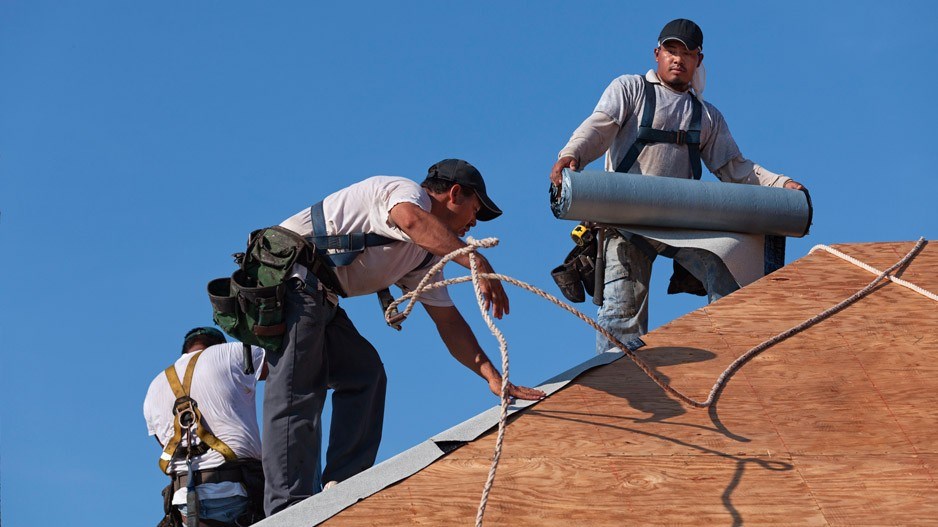While other sectors have seen demand for workers slacken as a result of COVID-19, demand for skilled construction workers remains as sharp as ever.
Building contractors provide essential services, and work sites were allowed to continue operating under strict protocols designed to limit the spread of disease.
The economy kept humming, and contractors continued to scramble for workers.
“Construction is insane right now. Insane,” said Jordana Lloyd, project manager with ACE Plumbing and Heating, a division of Bricor Mechanical Ltd. in Kelowna. “Right now, anyone with actual experience is so, so helpful to our business. When it’s so busy like this, man – anyone with any skills is so valued.”
Since the 1970s, declining fertility rates have made immigration a key driver of Canada’s population growth. As Canada’s population continues to age, the country’s reliance on immigration will only intensify, especially in sectors where the number of people in the domestic workforce is unable to keep pace with the demand for labour.
Of the approximately 90 people at ACE, about 10% are immigrants. Many came with credentials from other countries. Others, such as Luke Edwards, brought experience from his native South Africa and a desire to learn a trade.
Edwards connected with ACE through the BC Construction Association’s Integrating Newcomers program, which works with immigrants in their countries of origin, then connects them with the Skilled Trades Employment Program on arrival.
“He was around 28, a little older and definitely ready to get into a trade and settle in, and that’s definitely attractive,” Lloyd said. “We hired him and he is now going to become a plumber. It was a no-brainer for us.”
The hiring challenges facing the industry are documented in a new report from BuildForce Canada, which provides the construction industry with the labour market intelligence it needs to manage its workforce requirements. BuildForce anticipates a nation-wide shortage of up to 82,000 skilled workers by the end of the decade. B.C. is forecast to be 23,000 workers short in the same period.
“With almost a quarter of the current construction labour force expected to retire by 2029, the industry’s need for workers will only become more pressing with each passing year,” the report notes. “For Canada and its construction industry, there is quite simply no time to waste.”
The shortage could hit hard in Metro Vancouver, where immigrants are fundamental to the economy and the skills shortage has not been addressed by training programs.
“Without changes to federal immigration policies, construction may find it challenging to attract the qualified skilled trades professionals it needs now and in future,” said Fiona Famulak, president of the Vancouver Regional Construction Association.
Canada’s immigration policies over the past several decades have skewed toward admitting immigrants with higher levels of education, meaning those arriving in Canada are less likely to be drawn to careers in the construction industry. Between 2006 and 2018, immigrants entering Canada with skilled trades certification dropped by 2%, whereas those with college-level education or higher increased by 72%.
Part of the rationale for current government immigration policies is that immigrants with higher levels of education are more adaptable and can more easily integrate into Canadian society. The belief is that lower-skilled immigrants have fewer job opportunities and could become a burden on Canadian society if they are unable to secure permanent employment.
This policy bias has had a significant impact on the construction sector, making it difficult for employers to recruit newcomers with the necessary trade certificates. Consequently, only 13.5% of immigrants working in construction have a trade certificate, compared to 28% of Canadian-born workers.
“While enhanced domestic recruitment and the recruitment of individuals with the right skill mix from other sectors may reduce this [labour supply] gap, it won’t be sufficient to make up for the entire anticipated shortfall,” explained Bill Ferreira, executive director of BuildForce Canada. “Industry needs to work more closely with Immigration, Refugees and Citizenship Canada to facilitate the selection of immigrants with the skilled trades Canada needs.”
This includes both promoting Canada as a destination to potential immigrants as well as facilitating their transition into the country’s labour force. B.C.’s Integrating Newcomers program is a model of the outreach needed on a national level, he said.
The industry also has to make sure job sites are welcoming. While women, a long-standing priority of government diversity initiatives, now represent about 6% of all construction trades, and Indigenous workers reflect their share of the general population, BuildForce reports that visible minorities make up less than 5% of immigrants in the domestic construction workforce.
“There is more representation on worksites in British Columbia in general, but does that mean we don’t have to change the culture of construction to make it more acceptable for everybody? Absolutely not,” said Chris Atchison, president of the BC Construction Association. “This is not going to be an overnight switch-the-dial because the government is pushing on different priorities, but this is what we feel is important.”
The province’s Builders Code initiative is working to address the issue by encouraging more hospitable workplaces. Without better representation from new immigrants and visible minorities, the industry will find it harder to attract workers from these sectors in the future. Immigrants and visible minorities are more comfortable joining industries where they are welcome and where people who look like them are already working. •




